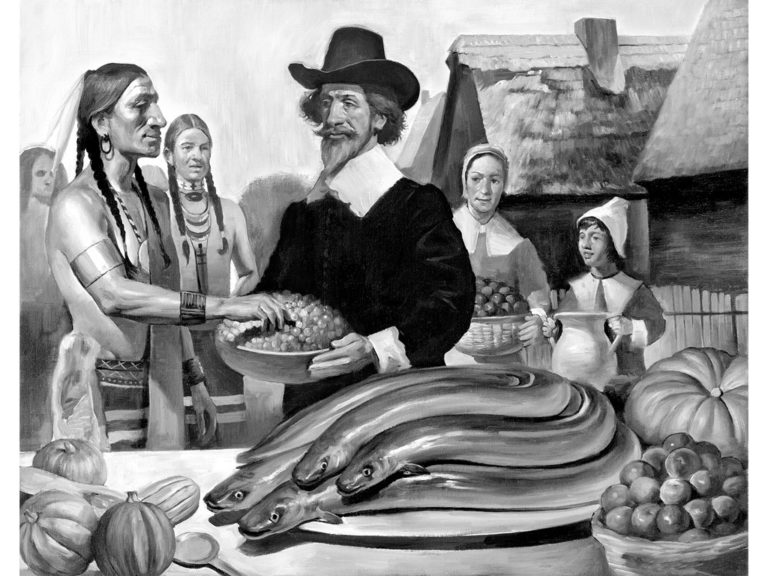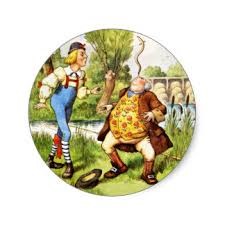FAMILY: Anguillidae
GENUS: Anguilla
American eel Anguilla rostrata
The American Freshwater Eel is the only species of freshwater eel found in North America. And is the only catadromous species in North America as well. It is a member of the Anguillidae Family.
Catadromous fish spend most of their lives in fresh water, then migrate to the sea to breed. This type is exemplified by eels of the genus Anguilla, numbering 16 species, the best-known of which are the North American eel (A. rostrata) and the European eel (A. anguilla). “Catadromous” means “downward-running,” and refers to the seaward migration of adults.
The species has survived multiple ice ages and seems to be equipped to withstand the cycles and fluctuations inherent in ocean dynamics.
Some scientists consider the highly adaptive American eel to have the broadest diversity of habitats of any fish species in the world.
Give thanks for….
the eel!!!

JAMES PROSEK NOV. 24, 2010 Roberto Parada
AS the story goes, Squanto — a Patuxet Indian who had learned English — took pity on the Pilgrims of Plymouth Colony who had managed to survive that first brutal winter, and showed them how to plant corn, putting a dead fish in each hole where a seed was planted. But before that, before the ground had even fully thawed, he taught them a perhaps more valuable skill: how to catch a fatty, nutritious fish that would sustain them in the worst of winters. And this food item, likely on the table of that first Thanksgiving, would have carried special significance to those remaining colonists. Eels — a forgotten staple of our forefathers.
Indeed, eel was the dinner that Pilgrims were given on the very day after they made peace with Massasoit, the sachem, or leader, of the region. The following account is from “Mourt’s Relation,” mostly written by a Plymouth resident, Edward Winslow: “Squanto went at noon to fish for eels. At night he came home with as many as he could well lift in one hand, which our people were glad of. They were fat and sweet. He trod them out with his feet, and so caught them with his hands without any other instrument.”
Eels spend the winter balled up, bodies twisted together in the mud (temperature range from about 35F – 80F). In the frigid months they were usually caught with fork-like spears, the eels pinned between the tines. The fish proved essential to the endurance of the Pilgrims, and it is fitting that a river near Plymouth Colony was named Eel River. And is still there today.
The peculiar life cycle of the freshwater eel was almost tailor-made for the harvest season, and for stockpiling food for the winter. Eels are born in the middle of the Atlantic Ocean, hatched as little larvae shaped like willow leaves. From there, they drift and swim toward the coast, where they enter the mouths of freshwater rivers and streams in the spring. I have observed them in that season when plates of ice still line the banks of tidal streams, “like pieces of slender glass rods shorter than a man’s finger,” as Rachel Carson described them.
The inches-long transparent juvenile fish then make their way upstream to feed and grow. They stay for 10 to 30 years, until one autumn when they feel the urge to return to the Sargasso Sea, the warm clockwise gyre more than 1,000 miles east of Bermuda in the Atlantic Ocean, to spawn and die.
In the 17th century, the autumn runs to the saltwater would have been epic, overlapping the hurricane season when an abundance of rainwater swelled the rivers. They moved in great numbers at night, en masse, sometimes forming braids with their bodies to overcome obstacles, or large balls to roll over gravel bars that separate the mouths of rivers from the sea. On wet nights eels would even travel overland, relentless in their quest to return to their natal womb in the deep ocean.
Traditionally, Native Americans caught eels in autumn by building large river weirs, two large stone walls stretching from the banks to the center of the river, forming a large V with the trap at the vortex on the downstream side. If the conditions were right — a steady rain to raise the river level and no moon — they could catch several tons of eel in one night. The fish was then dried and smoked for the winter, manna of huge and reliable proportions. There is evidence that East Coast Indians were using these stone and wood weirs 5,000 years ago, and probably earlier.
If eels were an essential food for Native Americans and early colonists, then why are they neglected as a food fish in modern America?
Why isn’t eel, instead of turkey, the symbol of colonial resilience and gratitude? That’s for each one of us to figure out and try out!!!
Australia
Anguilla australlis
c.6000 BC Australia Gunditjmara people farmed eels in artificial ponds connected by canals near Lake Condah, possibly since as early as 6000 BCE
China
Anguilla japonica
The earliest traceable Chinese record of eel aquaculture dates back to the Ming Dynasty (1368 – 1644). According to the Yang Yu Jing (“Yang” means aquaculture, “Yu” means fish, “Jing” means theories, techniques and applications), an ancient encyclopedia for fish aquaculture compiled by an agriculturist named Xingzeng Huang in the early sixteenth century, people collected “eel children” (perhaps glass eels or elvers) from rivers, put them into ponds and lakes.
Although this represent the start of eel aquaculture in China, intensive eel aquaculture did not begin until the mid-1970’s when China began to export some of its eel production to Japan and the US.
Rome
Anguilla anguilla
Crassus, too, was said to have adorned a pet eel with earrings and small necklaces “just like some lovely maiden,” training it to respond to its name and swimming up to eat what was offered. Rebuked by Domitius for weeping upon the death of the creature, he retorted that his accuser had buried three wives without shedding a tear(Aelian, VIII.4; Plutarch, De sollertia animalium, 976a; Macrobius, III.15.3). The praenomina are not given, and the Loeb translations footnote both Lucius and Gnaeus Domitius Ahenobarbus. The other protagonist is identified as Marcus Licinius Crassus, who had defeated Spartacus in 73 BC and was a member of the Triumvirate in 60 BC.
If the identification of Crassus is correct, Lucius Domitius must be meant, consul in 54 BC and the bitter rival of Crassus, who had him assaulted in the Forum (Plutarch, Crassus, XV.4). But if Gnaeus Domitius is intended (as Macrobius indicates), the father of Lucius and censor in 92 BC, then the Crassus of the story must be the orator Lucius Licinius Crassus, who shared the censorship that year. Such a rebuke would seem appropriate, Gnaeus Domitius calling Lucius Crassus a hypocrite as censor for weeping over the death of a pet eel, which was considered an expensive luxury item.
MODERN TIMES

Ely Eel Day is an annual celebration observed by people from Ely, Cambridgeshire, England to celebrate the city’s namesake — the eel. The celebrations start with a parade which begins from Cross Green outside Ely Cathedral and proceeds through the city to the Jubilee Gardens, passing by the Market Square and along the River Great Ouse at Ely’s Waterside.
There will be dancing, historic displays, a town criers contest and an eel throwing race. Competitors use stuffed toys rather than real eels.
It is said that in Saxon times the Isle of Ely paid Peterborough 80,000 eels (8,000 per year) to buy the stones that were then used to build Ely Cathedral. The festival aims to celebrate the eel’s humble heritage, and the local area’s history and traditions.

The celebrations following the parade include an eel throwing competition. The competition does not use real eels. Originally competitors were given socks rolled into some tights with rice in the end to weight it down but now the competition uses specially made toy eels. Other events on Eel Day include an annual competition for Town Criers.
It is traditional for any couples marrying that weekend to be named ‘the King of Eels’ and ‘the Queen of Eels’. Legend goes that eels bring good luck for married life. Accordingly, the City of Ely will send couples married that weekend a hamper of eels each year on their anniversary.] As part of the Eel Parade, the Queen of Eels must march ahead of the various floats and processions on a carriage, wearing a crown of (live) eels.
Eel Day is traditionally held on the Saturday, of the May Bank Holiday weekend.

Father William Balancing an Eel on his Nose, illustration from
‘Alice in Wonderland’ by Lewis Carroll

You are old, Father William, the young man said,
And your hair has become very white
And yet you incessantly stand on your head,
Do you think at your age it is right?
In my youth, Father William replied to his son,
I feared it might injure my brain
But now that I’m perfectly sure I have none
Why do it again and again.
You are old, said the youth, one would hardly suppose
That your eyes was as steady as ever
Yet you balance an eel on the end of your nose
What made you so awfully clever?
I have answered your questions and that is enough,
Said his father, don’t give yourself airs
Do you think I can listen all day to such stuff?
Be off! or I’ll kick you downstairs!




